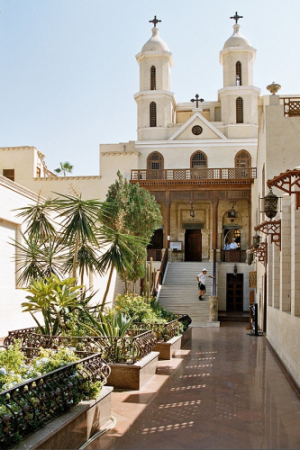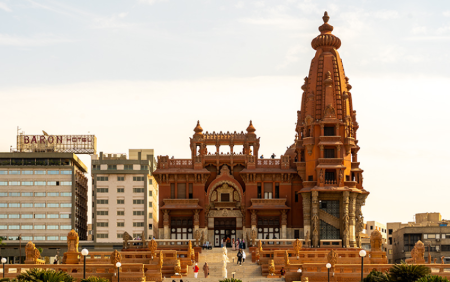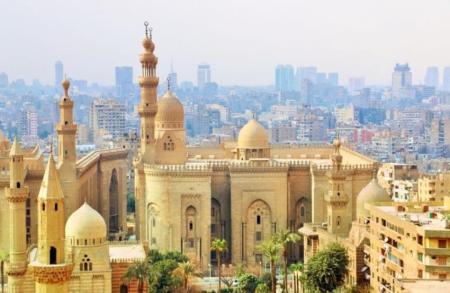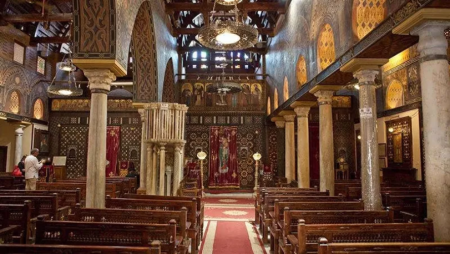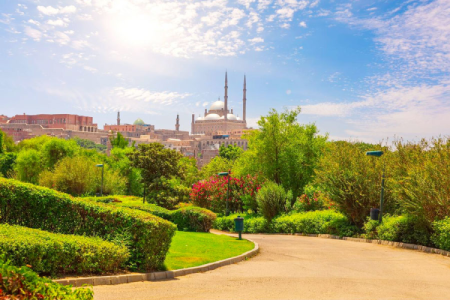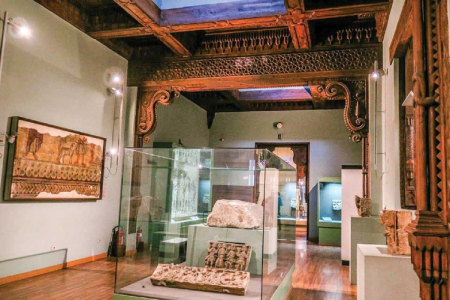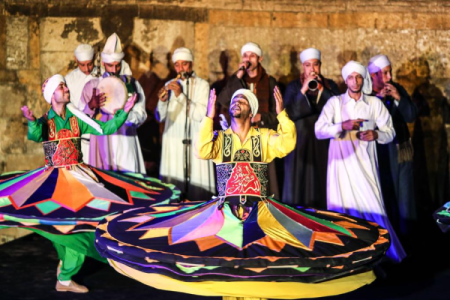Ben Ezra Synagogue

Ben Ezra Synagogue: The Timeless Jewel of Coptic Cairo
Nestled in the heart of Coptic Cairo (old cairo), the Ben Ezra Synagogue stands as a silent witness to centuries of spiritual devotion, cultural exchange, and historical transformation. This remarkable synagogue, one of the oldest and most significant in Egypt, carries with it a legacy that intertwines Judaism, Christianity, and Islam within a single architectural masterpiece. Every stone of this sacred site whispers stories of faith, resilience, and coexistence, drawing travelers, historians, and worshippers from around the world.
Constructed in the ninth century and later reconstructed in 1892, Ben Ezra Synagogue isn't merely an architectural curiosity—it's a living testament to Egypt’s layered religious history. Situated near the Hanging Church and The Coptic Museum, it offers a unique glimpse into how diverse faiths once thrived side by side in Cairo’s oldest district. Visitors are often captivated by its exquisite architecture, serene atmosphere, and the profound sense of timelessness that pervades the synagogue’s walls.
For centuries, Ben Ezra Synagogue has been a beacon for those exploring Egypt’s Jewish heritage. Its popularity among tourists on Cairo Day Tours continues to grow as travelers seek authentic encounters with Egypt’s multi-religious past. Whether you’re a history buff, an architecture enthusiast, or a pilgrim tracing ancient footsteps, this historic treasure promises to leave you spellbound. Its legacy is not just about stone and mortar but about the enduring spirit of tolerance and shared humanity.
Historical Origins of the Ben Ezra Synagogue
The origins of the Ben Ezra Synagogue trace back to the ninth century, during a time when Cairo, then known as Fustat, was a thriving hub of trade and cultural diversity. According to tradition, the synagogue was built on the site where baby Moses was found among the reeds of the Nile River by Pharaoh’s daughter, a story that connects this Jewish sanctuary deeply to the narratives of both Judaism and Christianity.
Originally purchased by Abraham Ben Ezra, a wealthy Jewish leader from Jerusalem, the site was transformed into a synagogue that soon became the spiritual heart of Egypt’s Jewish community. Throughout the centuries, it served as a center not only for worship but also for study and communal decisions. Its sacred Geniza—a storeroom for old Hebrew manuscripts—would later become one of the most significant archaeological finds in Jewish history.
The Cairo Geniza: A Treasure Trove of History
One of the most fascinating aspects of the Ben Ezra Synagogue is the discovery of the Cairo Geniza. Hidden in the upper gallery of the synagogue, this storeroom contained over 300,000 Jewish manuscripts written in Hebrew, Aramaic, and Judeo-Arabic. These texts, dating from the 9th to the 19th centuries, offered unparalleled insights into Jewish, social, and economic life in the medieval Mediterranean world.
The Cairo Geniza is often regarded as one of the most important documentary finds in history, shedding light on trade networks, daily life, prayer traditions, and even women’s roles within the community. Many of these manuscripts are now preserved in institutions such as Cambridge University and the Jewish Theological Seminary of New York. For Egypt, the discovery reaffirms the country’s pivotal role in the preservation of world heritage.
Architectural Splendor of Ben Ezra Synagogue
The synagogue’s architecture is an extraordinary fusion of Egyptian, Islamic, and Romanesque influences, reflecting Cairo’s deeply intertwined cultural history. Its facade, adorned with delicate geometric patterns and ornate wooden carvings, speaks volumes about the artisanship of its builders. Upon entering, visitors are greeted by a breathtaking interior filled with marble floors, intricately carved wood panels, and stunning stained-glass windows that filter the sunlight into a kaleidoscope of colors.
The bimah, or pulpit, stands majestically at the center, surrounded by wooden latticework inlaid with ivory. The Torah Ark, decorated with gold-leaf motifs, captures the eye immediately. Every detail—from the Hebrew inscriptions to the mosaic patterns—reveals the high level of craftsmanship and artistry that defined Egypt’s golden age of architecture.
Restoration and Preservation Efforts
Over time, the Ben Ezra Synagogue underwent several restorations, the most significant being the late 19th-century reconstruction that gave it much of its current appearance. The Egyptian government, along with international preservation groups, has worked tirelessly to maintain its structural integrity and historical authenticity. Today, it no longer functions as an active place of worship but rather as a cultural and historical monument open to visitors.
With its proximity to landmarks like the Babylon Fortress Cairo and Abu Serga Church, this synagogue offers a deep dive into the layered history of Coptic Cairo, where Judaism, Christianity, and Islam coexist in harmony.
The Religious and Cultural Significance of Ben Ezra Synagogue
The Ben Ezra Synagogue is more than a historical monument—it’s a symbol of religious tolerance and coexistence. Throughout Egypt’s long history, Jewish, Christian, and Muslim communities lived side by side, enriching each other’s traditions. The synagogue stands as a physical reminder of that shared legacy.
Interfaith Connections in Coptic Cairo
Its location near the Al Azhar Mosque and the National Museum of Egyptian Civilization highlights how Cairo remains a city where faiths have intersected for millennia. For travelers keen on exploring religious landmarks, the synagogue is an essential stop to understand Egypt’s cultural mosaic.
The Synagogue’s Role in Modern Egyptian Identity
In contemporary Egypt, the Ben Ezra Synagogue serves as a bridge between the past and the present. It’s an educational site that invites Egyptians and foreigners alike to appreciate the contributions of the Jewish community to the nation’s heritage. The synagogue’s peaceful ambiance makes it an ideal place for reflection, especially for those tracing the roots of Abrahamic religions in Africa’s oldest metropolis.
Visiting the Ben Ezra Synagogue: A Timeless Experience
Visiting the Ben Ezra Synagogue isn’t just a sightseeing activity—it’s a spiritual journey. Its serene courtyard and surrounding narrow streets transport visitors back to an era when Cairo was the crossroads of civilizations. The site’s proximity to other iconic attractions in old Cairo allows for a full-day tour exploring ancient faiths and historical landmarks.
Many travelers include the synagogue in their customized Egypt Travel Packages, as it complements perfectly with Islamic and Coptic Cairo tours. The synagogue’s peaceful aura provides a welcome break from the bustling modern city, making it one of the most captivating stops on the cultural route of Egypt.
Tips for Travelers Exploring Ben Ezra Synagogue
Plan your visit early in the day to avoid crowds and enjoy the tranquil atmosphere. Modest dress is recommended, respecting the sacred nature of the site. Engage a local guide knowledgeable about Cairo’s interreligious heritage for a deeper understanding of the synagogue’s significance within Egypt’s broader history. Combining your visit with nearby sites such as Khan al-Khalili Cairo can create a truly immersive cultural experience.
Frequently Asked Questions about Ben Ezra Synagogue
1. Where is the Ben Ezra Synagogue located?
Ben Ezra Synagogue is located in Coptic Cairo, within the district of Old Cairo, near the Babylon Fortress and the Hanging Church. This area is one of the most historically rich neighborhoods in Egypt, home to numerous religious landmarks that span centuries of faith and artistry.
2. What makes the Ben Ezra Synagogue historically important?
The synagogue is historically important because it represents the longstanding Jewish presence in Egypt and houses the famous Cairo Geniza manuscripts. These ancient texts have provided scholars with invaluable insights into the cultural, commercial, and religious life of medieval Egypt and the Jewish diaspora.
3. Is the Ben Ezra Synagogue open to visitors?
Yes, it’s open to visitors and tourists year-round. While it no longer functions as a place of active worship, it remains well-preserved and accessible to those interested in Egypt’s Jewish heritage. Guided tours often include the synagogue as part of comprehensive Egypt Vacations Packages.
4. What are the architectural highlights of the synagogue?
The key highlights include the marble flooring, carved wooden gallery, ornate Torah Ark, and intricate stained-glass windows. The blend of Islamic and Byzantine design elements showcases the coexistence and artistic exchange that defined Cairo’s medieval period.
5. Why should I include the Ben Ezra Synagogue in my Cairo itinerary?
Including the Ben Ezra Synagogue in your Cairo itinerary offers a window into Egypt’s multicultural past. It complements nearby sites like the Coptic Museum and Abu Serga Church, creating a full picture of Old Cairo’s religious diversity. For travelers seeking authentic cultural immersion, it’s an unmissable stop.
Conclusion: The Eternal Spirit of Ben Ezra Synagogue
The Ben Ezra Synagogue stands not merely as a relic but as a living reminder of Egypt’s pluralistic heritage. Its walls tell stories of faith, migration, and shared humanity. As one of Cairo’s most treasured landmarks, it continues to inspire awe and reverence in those who walk through its halls.
Whether you’re exploring through a heritage-focused itinerary, partaking in Best Nile River Cruises, or enjoying cultural Egypt Excursions, the Ben Ezra Synagogue remains a must-see masterpiece. It reminds every visitor that Egypt’s richness lies not only in its pharaohs and pyramids but also in the diversity of its faiths and the harmony of its people.




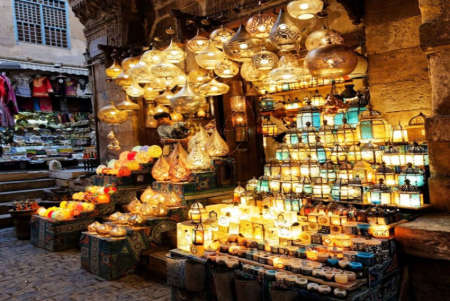
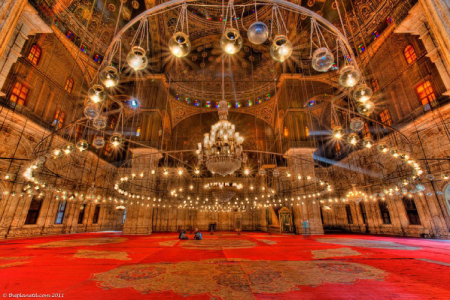


.png)


